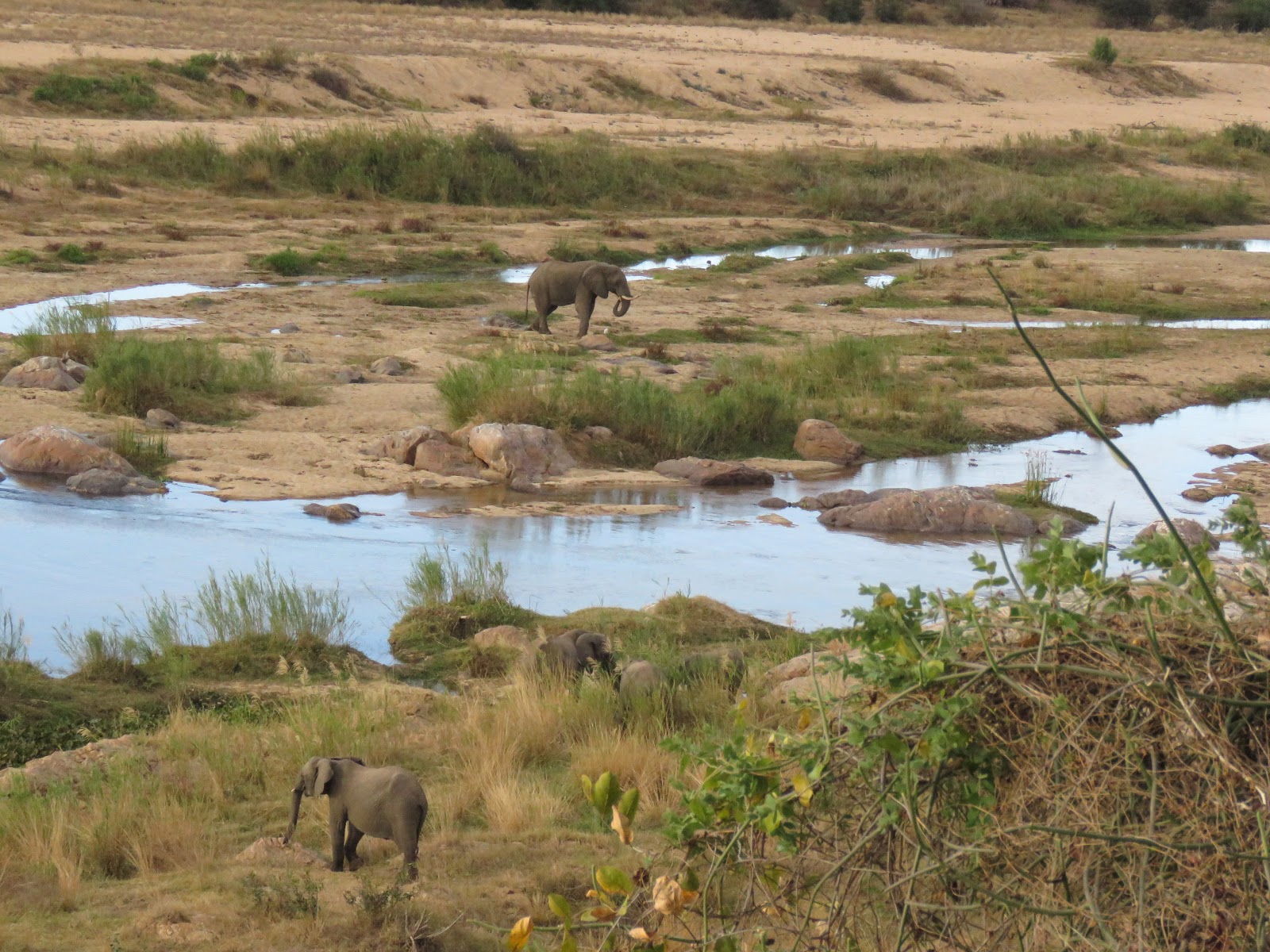 |
| Little Wart Face gave it an honest effort, but he couldn’t get it quite right. |
“Sighting of the Day in the Bush”
 |
| Although Tom has to take down and refill the bird feeder several times a day due to the monkeys eating the seeds, we thoroughly enjoy watching the birds partaking. |
We’d hoped to head to Kruger today but have decided to go another day. The sky is cloudy and doesn’t appear it will clear in time for us to go. Instead, today, we’ll make our usual run to Komatipoort and Lebombo for groceries and carrots and apples for the wildlife and head to Kruger on the next sunny day.
Yesterday, I called Obaro, and it appears they now have pellets in stock, and we’ll load up enough for the next few weeks until it’s time to go to Zambia and Botswana on August 16th.
 |
| Little Wart Face attempting to mate with this young female. |
Although neither of us particularly loves to shop, we find the weekly trips interesting and diverse. The townspeople are friendly, the culture fascinating, and generally, we can find most of the items we need to purchase, forgoing thoughts of those items we can’t find.
Since I’m no longer eating dairy, my options for meals are limited. Most of our favorite dishes include dairy in one form or another. It appears I have no trouble with butter, but all other dairy products must be excluded from my diet to maintain this high level of feeling so well.
 |
| This occurred after dusk, and thus, the photos aren’t as straightforward as we’d hoped. |
Day after day, I’m aware of how great I’m feeling for the first time in over two years. From the time I contracted the bacterial infection in Fiji and later the injury in the pool in Bali, I was plagued with constant pain and discomfort.
To be free of pain is such a blessing, and I never forget how important it is I don’t consume a slice of cheese, a dollop of cream, or a smear of cream cheese on a celery stick. It takes no willpower whatsoever. The excellent end result of feeling good keeps me highly motivated.
Snack options are limited so I avoid snacking. I’m slowly losing weight and will share details when I reach my goal in the next few months. Surprisingly, it hasn’t been that difficult.
 |
| He’d been making the train-like noise up until he actually tried to make contact. The bowl in the dirt was left after we’d fed eggs to the mongooses a few minutes earlier. |
We now have a hearty breakfast each morning, with two eggs and sardines, which are high in calcium to compensate for my lack of dairy products, while Tom has three eggs and bacon. We don’t eat again until dinner on the veranda around 7:00 pm. This schedule provides us with approximately 11 hours of intermittent fasting which works well for both of us.
As for today’s warthog mating photos, I’d like to stress, we do not include these or other mating photos for any shock value. Our intent is purely to illustrate the magic and mystery of nature at its finest. Having the opportunity to observe the “cycle of life” in nature is truly a gift.
 |
| It’s evident in this photo that contact wasn’t fully executed. |
In many months to come, we’ll see the park filled with babies from this mating season. For an interesting article in Africa Geographic regarding warthog mating, please click here.
The gestation period for warthogs is 152 to 183 days. Generally, piglets are born between October and February. It won’t be long before we see entirely new batches of youngsters coming to call with their moms (occasionally dads), aunts, and siblings from past litters.
 |
| It’s a rare opportunity to see mating in the wild, but this appeared more to be “practice” than anything. |
Warthogs may stay with their family group, a sounder, for a few years, eventually finding their burrows for rest at night. However, they often stay in the same general territory as other family members.
When we see them at night, they tend to wander off by 2100 hours (9:00 pm) to return to their burrow for the night. Moms will place their offspring in the burrow first and follow behind facing the opening to guard the family unit.
 |
| Not a night passes without an opportunity to watch these adorable bushbabies enjoy the yogurt we place on their little stand. |
Intelligent animals, pigs of all breeds are rated #2 of the top 25 most intelligent animals on earth. See this list for details. This is clearly evidenced to us daily as we carefully observe their behavior. Dogs are rated #6.
That’s it for today folks! Have a fabulous day! We’ll be back with more tomorrow.
Photo from one year ago today, July 31, 2017:
Here were our total expenses for the 25 nights we spent in Henderson Nevada. Please click here for more details.
| Expense | US Dollar |
| Housing (Richard’s home) | $ – |
| Gifts & Misc. | $ 299.00 |
| Airfare | $ 1,137.00 |
| Rental Car & Fuel | $ 926.00 |
| Groceries | $ 1,245.30 |
| Dining Out | $ 402.52 |
| Supplies & Pharmacy | $ 609.32 |
| Entertainment | $ 310.25 |
| Total | $ 4,929.39 |
| Avg Daily Cost 25 days | $ 197.18 |


















































































































